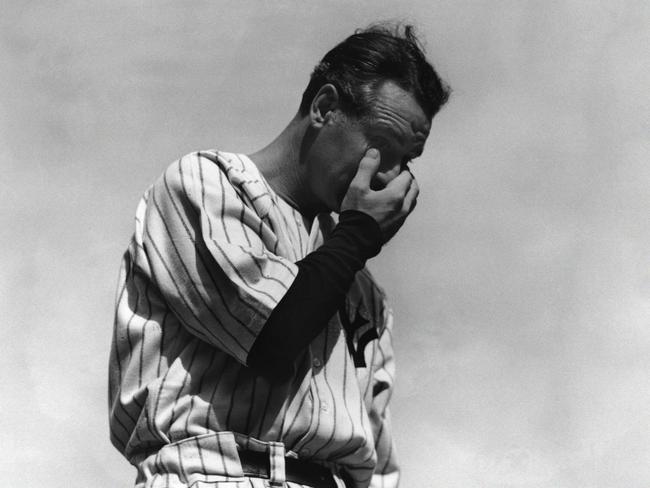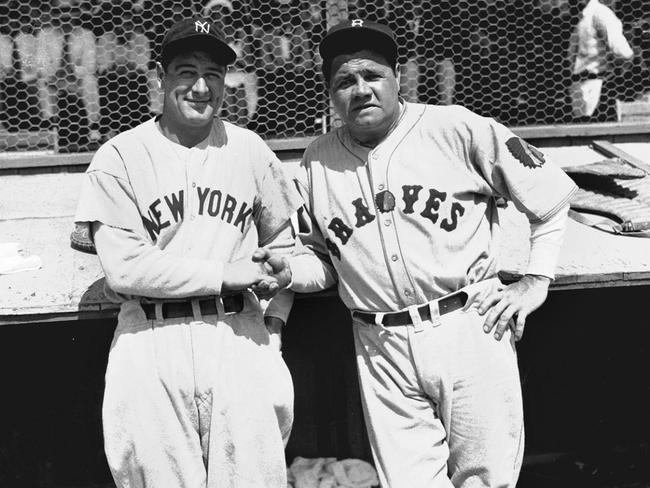Baseball star Lou Gehrig gave name to the disease that killed him
Baseball star Lou Gehrig had a terrible season in 1938 but when things got worse in 1939 he discovered the reason was that he had contracted an incurable disease
Baseball star Lou Gehrig was having a terrible season. He often felt tired, his timing and co-ordination were off and his batting average dropped alarmingly. The once powerful and accurate hitter now appeared clumsy and weak.
On May 2, 1939, he finally broke his record streak of 2130 games playing for the Yankees, telling the team manager that he was putting himself on the bench “for the good of the team”.
The breaking of the 14-year streak made headlines across the US.
Gehrig thought he would be better after resting for a few weeks but when he returned to the team on June 12 he knew for sure that something was seriously wrong.
On June 13, he flew to the Mayo Clinic in Rochester, Minnesota and after several days of tests was given the news that he had amyotrophic lateral sclerosis (ALS). He waited for doctors to tell him what the treatment was, but there wasn’t one.
Gehrig had to face the truth that the disease would probably kill him in a matter of a few years.
On June 19, his diagnosis was made public and on June 21, 80 years ago today, the worst fears of baseball fans were confirmed when it was announced that Gehrig was retiring.
The public demanded a tribute to the great slugger and so July 4 was named Lou Gehrig Appreciation Day at Yankee Stadium.

A tearful Gehrig spoke to the fans, saying that although people may have thought he had got a “bad break” he considered himself “the luckiest man alive” for the life he had lived.
His health rapidly declined thereafter and he died within three years, but is still remembered as one of the all-time greatest baseball players and his name indelibly associated with ALS which many people still call “Lou Gehrig’s disease”.
It was the same disease which afflicted theoretical physicist Stephen Hawking.
He was born Henry Louis Gehrig on June 19, 1903, in New York, the son of German immigrants Heinrich and Christina. The only one of his parent’s four children to survive beyond infancy, he grew up in a mostly German neighbourhood in Manhattan, speaking fluent German at home, but English outside the home.
He took to the “great American pastime” with passion and was also a gifted American football player.
At 17 he made the local news by whacking a ball out of Cubs Park (now known as Wrigley Field), while playing for the New York School of Commerce team. It was hard enough for professional baseballers to hit the ball that far.

Despite his prowess on a baseball diamond it was his football skills that won him a scholarship to Columbia University. While studying engineering he played both football and baseball for the university teams, although he was banned from playing varsity sport for a semester when someone talked him into playing some games of professional baseball.
After two years he packed in his studies and pursued a full-time baseball career.
He made his major league debut on June 15, 1923 for the Yankees. He didn’t get much time at the bat for the first two seasons but in 1925 he replaced first baseman Wally Pipp in the line-up and stayed in the line-up for 2130 games.
In 1926 he had a remarkable year hitting 12 home runs and with a batting average of .313 — the number of hits divided by the times at bat, anything over .300 is considered excellent. Gehrig’s average would continue to rise, peaking at .363 in 1934.
The Yankees team became known as Murderers’ Row, because its powerful line-up included Gehrig and the great Babe Ruth (who played his last season for the Yankees in 1934). Gehrig and Ruth were great friends until they had a falling out in 1934.
When Gehrig’s batting average dropped to .295 in 1938 and then to .143 in 1939 it became obvious that not only was his streak over but something was seriously wrong.
After his diagnosis with ALS he retired from the game and at his July 4 send-off was applauded by a crowd of 61,000.
In honour of Gehrig the Yankees retired the No. 4 jersey, making him the first major league baseballer to be given that honour.
New York Mayor Fiorello La Guardia gave Gehrig a job as a parole commissioner, which had a yearly salary of $5700. He asked that the press not follow him around when he visited prisons as part of his duties.
He was appointed for 10 years but he asked for a six-month leave of absence when his condition worsened in April 1941.
In his last months, as he became incapacitated by ALS, he was cared
for by his wife, Eleanor, who he had married in 1933.
He died on June 2, 1941.



